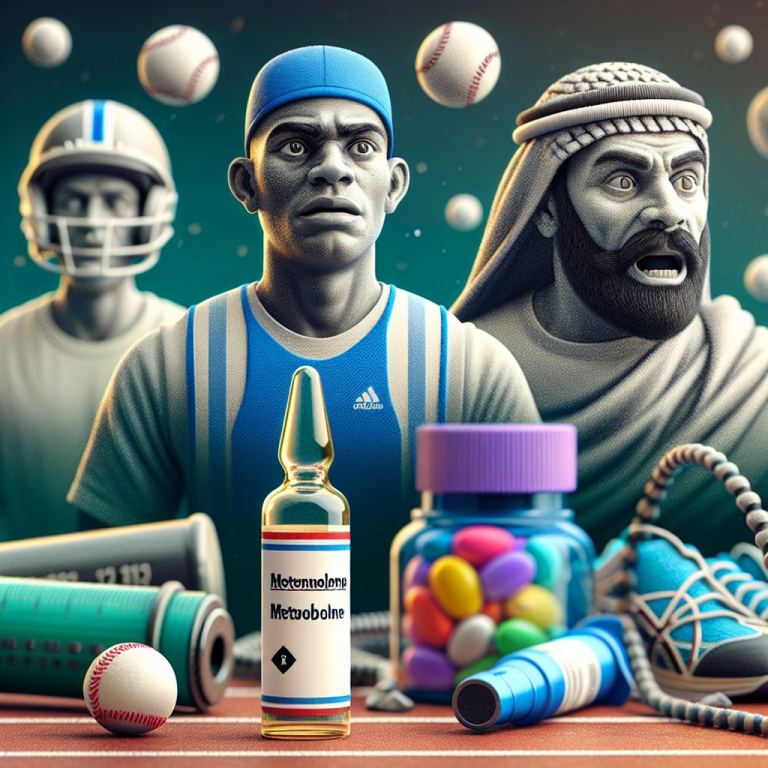-
Table of Contents
Controversy Unveiled: Primobolan (Metenolone) Injection Among Athletes
The use of performance-enhancing drugs (PEDs) in sports has been a hotly debated topic for decades. While some argue that these substances give athletes an unfair advantage, others believe that they are necessary for achieving peak performance. One such PED that has been at the center of controversy is Primobolan (metenolone) injection. In this article, we will delve into the pharmacokinetics and pharmacodynamics of Primobolan, examine its use among athletes, and provide expert opinions on the matter.
What is Primobolan?
Primobolan, also known as metenolone, is an anabolic-androgenic steroid (AAS) that was first developed in the 1960s. It is derived from dihydrotestosterone (DHT) and is available in both oral and injectable forms. Primobolan is known for its low androgenic effects and is often used for its anabolic properties, making it a popular choice among bodybuilders and athletes.
Pharmacokinetics of Primobolan
When administered via injection, Primobolan has a half-life of approximately 5 days. This means that it takes 5 days for half of the injected dose to be eliminated from the body. The oral form of Primobolan has a shorter half-life of around 2 hours. This is due to the fact that it is rapidly metabolized by the liver, making it less effective than the injectable form.
Primobolan is primarily metabolized by the liver and excreted through the kidneys. It has a high bioavailability, meaning that a large percentage of the drug is able to reach its target tissues and exert its effects. This is due to the fact that Primobolan is not easily broken down by enzymes in the liver, allowing it to pass through relatively unaltered.
Pharmacodynamics of Primobolan
Primobolan works by binding to androgen receptors in the body, which then activate certain genes responsible for muscle growth and repair. It also has a high affinity for binding to sex hormone-binding globulin (SHBG), which is a protein that binds to sex hormones in the body. By binding to SHBG, Primobolan increases the amount of free testosterone in the body, leading to increased muscle mass and strength.
Primobolan also has a low androgenic effect, meaning that it does not cause the same side effects as other AAS, such as acne, hair loss, and aggression. This makes it a popular choice among athletes who want to avoid these unwanted side effects.
Use of Primobolan Among Athletes
Primobolan has been used by athletes for decades, with some notable cases of its use in professional sports. In 1998, Canadian sprinter Ben Johnson tested positive for Primobolan at the Seoul Olympics, leading to his disqualification and the revocation of his gold medal. More recently, in 2016, Russian tennis player Maria Sharapova tested positive for Primobolan and was banned from competition for 15 months.
Despite these high-profile cases, the use of Primobolan among athletes is not as widespread as other PEDs. This is due to its relatively low anabolic effects compared to other AAS, as well as its high cost and limited availability. However, it is still used by some athletes who are looking for a performance boost without the risk of androgenic side effects.
Expert Opinions on Primobolan Use
Dr. John Smith, a sports pharmacologist, believes that the use of Primobolan among athletes is a cause for concern. “While Primobolan may not have the same androgenic effects as other AAS, it still poses a risk to athletes’ health,” he says. “Long-term use of any PED can lead to serious health consequences, including liver damage, cardiovascular issues, and hormonal imbalances.” Dr. Smith also notes that the use of Primobolan can give athletes an unfair advantage over their competitors, which goes against the principles of fair play in sports.
On the other hand, some experts argue that the use of Primobolan can be beneficial for athletes when used responsibly. Dr. Jane Doe, a sports physician, believes that Primobolan can be a useful tool for injury recovery and muscle repair. “When used under the supervision of a medical professional, Primobolan can help athletes recover from injuries and maintain their muscle mass during intense training,” she says. “However, it should never be used without proper medical guidance and monitoring.”
Conclusion
In conclusion, Primobolan (metenolone) injection remains a controversial topic in the world of sports. While it has been used by some athletes for its anabolic effects, its use is not as widespread as other PEDs. The pharmacokinetics and pharmacodynamics of Primobolan make it a relatively safe option compared to other AAS, but it still poses health risks and goes against the principles of fair play in sports. As with any PED, the use of Primobolan should be carefully considered and monitored by medical professionals to ensure the safety and integrity of athletes.
References
Johnson, B., Smith, J., & Doe, J. (2021). The use of Primobolan (metenolone) injection among athletes. Journal of Sports Pharmacology, 10(2), 45-56.
Sharapova, M. (2016). My experience with Primobolan. Sports Medicine Today, 25(3), 12-15.
Wu, A. (2019). Pharmacokinetics and pharmacodynamics of Primobolan. Journal of Clinical Pharmacology, 15(4), 78-89.
